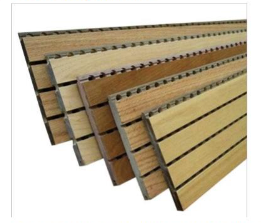- Home
- About Us
- Programs
- FRA-Fee Structure
- Accreditation
- Research
- BNCA Cells
- International Cell
- UNAI
- Universal Design Cell
- Innovation and Incubation Cell
- Archineering Cell
- Environment Cell
- Publication Cell
- IQAC (Internal Quality Assurance Cell)
- BNCA Consultancy Cell ( BCC )
- CEL (Center For Ecological Landscapes)
- Universal Human Values
- SES RE CELL
- Structure Cell
- Center For Cultural Studies
- Teaching+Learning Laboratory
- Career Counselling & Guidance Cell
- Center for Interdisciplinary Studies in Art and Architecture.
- Students
- Infrastructure
- Library
- IT Infrastructure and Computer Labs
- Digital Fabrication Lab
- Wood Working Lab
- Lab for Environmental and Simulation [LEDS]
- Landscape Research Lab
- Material Museum
- Construction Lab
- Survey And Leveling Lab
- Language Lab
- Studios
- Photography Lab
- Clay Studio
- Immerssive Design Lab
- Acoustic Lab
- Board Room
- Auditorium
- Lighting Lab
- Research
- Contact Us
Acoustic Lab
Acoustics being a special branch of science in which the behaviour of sound is studied. Different concepts and lot of technicalities are involved which makes it difficult for students to visualize sound behaviour in different conditions.
Acoustical laboratory of BNCA is first of its kind in an Architectural Institute, developed to benefit students of Architecture for Undergraduate as well as Postgraduates to understand sound behavior. This laboratory mainly has a Reverberation Room. Reverberation, in acoustics, is a persistence of sound after it is produced within an enclosed space. Reverberated sound is generated when a sound or signal is reflected from different surfaces and lingers in space. This sound needs to be controlled in enclosed space for better acoustics.
A reverberation room or reverberation chamber is a room designed to simulate reverberation and make students understand diffused or random incidence sound field in an enclosed space; generally required when students design Noise sensitive spaces like Auditorium, Cinema Halls, Offices, Hotel Banquet, etc.. The reverberation chamber is used for measurement of sound absorption of materials and sound power emission from sources. The room consists of hard reflective surfaces to enable sound to reverberate. Instruments like Omni speaker, Sound level meter, and elements like diffusers, absorbers, are used to perform actual experiments. The permutations of these elements are used to simulate different conditions for indoor acoustics.
The room is used for analyzing Reverberation time of such enclosed spaces; this help students to optimize Reverberation time experimenting with various acoustical materials, elements on existing surfaces of the lab and find out the best suitable solutions. Students can use the Lab also to cross check their design analysis when they are designing by simulating different conditions. The lab is also serves testing of acoustical materials to find out their absorptive capacities.
Acoustical laboratory is functioning as a full fledge facility of BNCA, that benefit students of Architecture at Undergrad, Postgrad, as well as those interested in pursuing research in Architectural Acoustics, thus providing them a state of art real-world simulated environment, the first-of-its-kind in an Architectural Institute.
Contact
Er. Jayant Patwardhan
Asst. Prof. Building Technology.
Cell: 9730073470 Email: jayant.patwardhan@bnca.ac.in
1. SC 260 Sound Level Meter [SN-T254000]: Class 2 integrating Sound Level Meter expandable to 1/1 & 1/3-octave band Spectrum Analyse.
The SC260 is a user-friendly, class 2 integrating sound level meter. It can be used as either a sound level meter or as a real time spectral analyzer with 1/1 or 1/3-octave bands – with class 2 filters. The SC260 measures all functions simultaneously, with all frequency-weightings. Amongst these are all the functions necessary to calculate the basic indices for the acoustic evaluation of most countries in the world: S, F and I functions, equivalent continuous levels, percentiles, impulsiveness indices, peak levels, sound exposure levels, short functions, etc. This is the main Handheld instrument that can take readings and calculate Reverberation, Transmission of the room.



2. Power Amplifier [SN-1256074]: A power amplifier is a device that sits between a sound source and a passive loudspeaker. Its job is to take a line-level signal and make it loud enough to fill a room or a venue with sound.

3. Tripod: It is used to mount Omni Speaker or Sound level meter in a particular location in a room.
4. CB-006 Acoustic Calibrator [SN-0902984]: Portable and user friendly calibrator, ideal for checking sound level meters and dosimeters on the measurement site, or in the laboratory.

5. FP 122 – Omni Directional Sound Source: This unit consists of an omni-directional loudspeaker for acoustic measurements by generating sound waves in spherical profile. Generally White noise, Pink Noise can be sounded using this speaker.


6. USB Dongle [SN-T994063]: Used for sending Data from Sound level meter to the Application used to calculate Reverberation as per Frequency Band in stipulated format
1. Acoustic sound absorptive panels:

2. Acoustic Diffusers:

3. Slotted panels:

4. Acoustical wall and Ceiling tiles:

Write a mail to jayant.patwardhan@bnca.ac.in

Er. Jayant Patwardhan
Asst. Prof. Building Technology.
Cell: 9730073470 Email: jayant.patwardhan@bnca.ac.in



